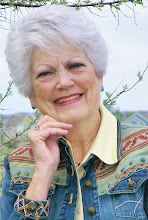I am a book junky. I buy all kinds of writing books but never read them completely. I use them to research writing techniques/tips, etc. My goal is to finish The Writer's Journey. If I post about what I read there, perhaps I'll reach my goal. The book presents a sure-fire way of writing good stories.
Highlights for Children offers a class on the Hero's Journey. Unfortunately, I've never had the chance to attend. Once after seeing the write up, I purchased The Writer's Journey by Christopher Vogler. The author believes every good story is based on the mythic structure of the Hero's Journey which he discovered when he crossed paths with the mythologist Joseph Campbell, author of The Hero of a Thousand Faces. Google his name for more information on Campbell. After discovering Campbell's pattern for story, Vogler began to compare the pattern to popular movies.
Another follower of the principle is John Truby, a screenwriter, director, and screenwriter teacher. I found out about him through the Writers Store. On that link you'll find articles by John Truby. There are other classes and books based on the idea of screenwriting as a tool for story/novel writing. They teach the three-act form of writing. It works.
Let's begin with an overview. "Book One, Mapping the Journey, is a quick survey of the territory," says Vogler. He tell you to consider the book as a journey map through story. Book Two, details the 12 elements of the Hero's Journey. "An Epilogue, Looking Back on the Journey, deals with the special adventure...... and some pitfalls to avoid on the road."
Element 1 - The Ordinary World
Most stories take the hero from the ordinary, everyday world into a new, unfamiliar world. He is like a "fish out of water." Before you can place him in the unfamiliar, the reader needs to know the familiar world. Then, the reader sees a real contrast in the two worlds in which the hero lives. Take for instance, The Wizard of Oz. When possible, I'll use this movie as an example. A lot of time is spent showing the drab world in which Dorothy lives. Of course, shooting the scenes in black and white contribute to portraying that drab life. Once she arrives in Oz, color shines. The reader definitely realizes the difference.
Monday we will discuss a few more of the 12 elements.
Thursday, February 24, 2011
Subscribe to:
Post Comments (Atom)




No comments:
Post a Comment